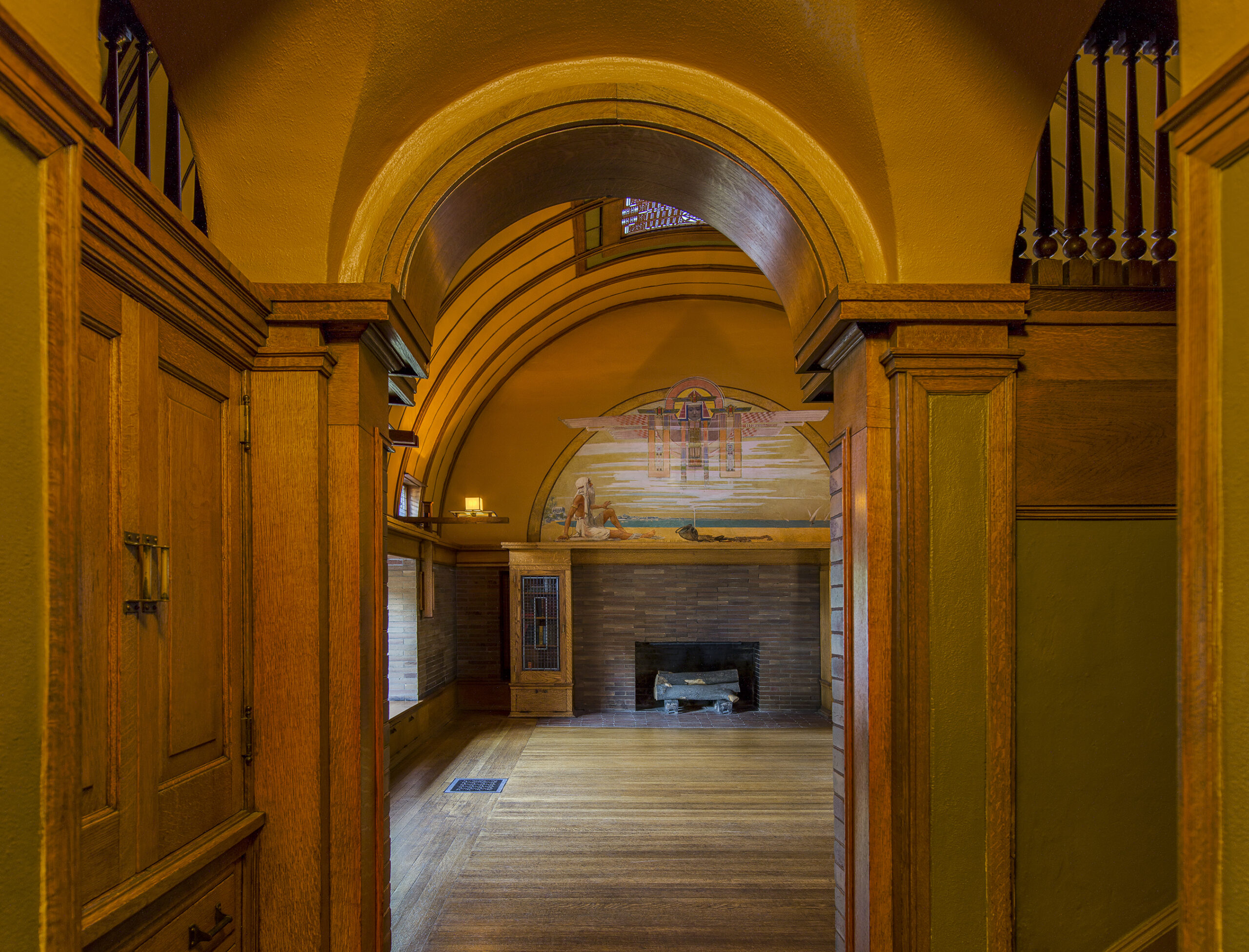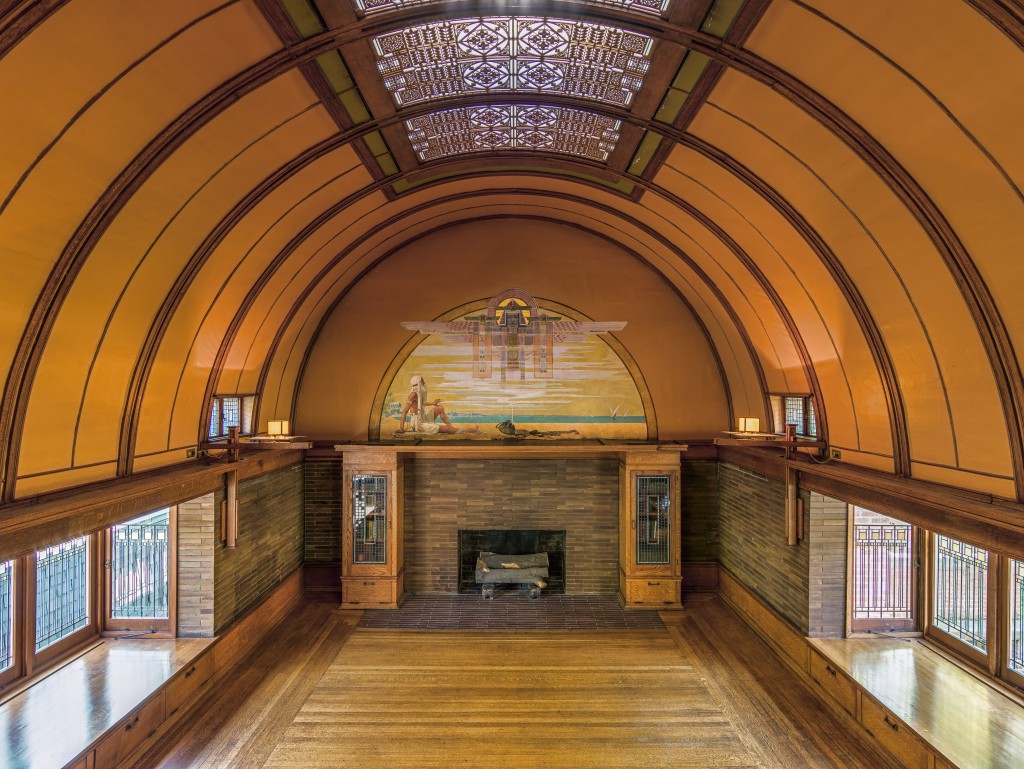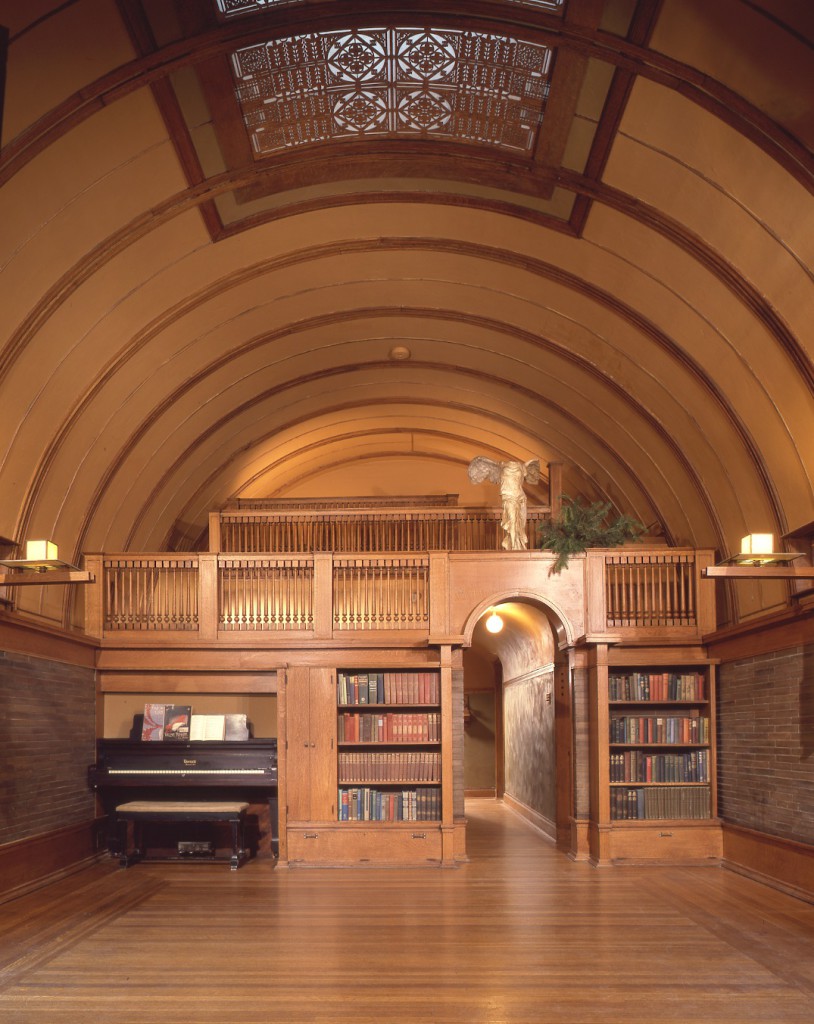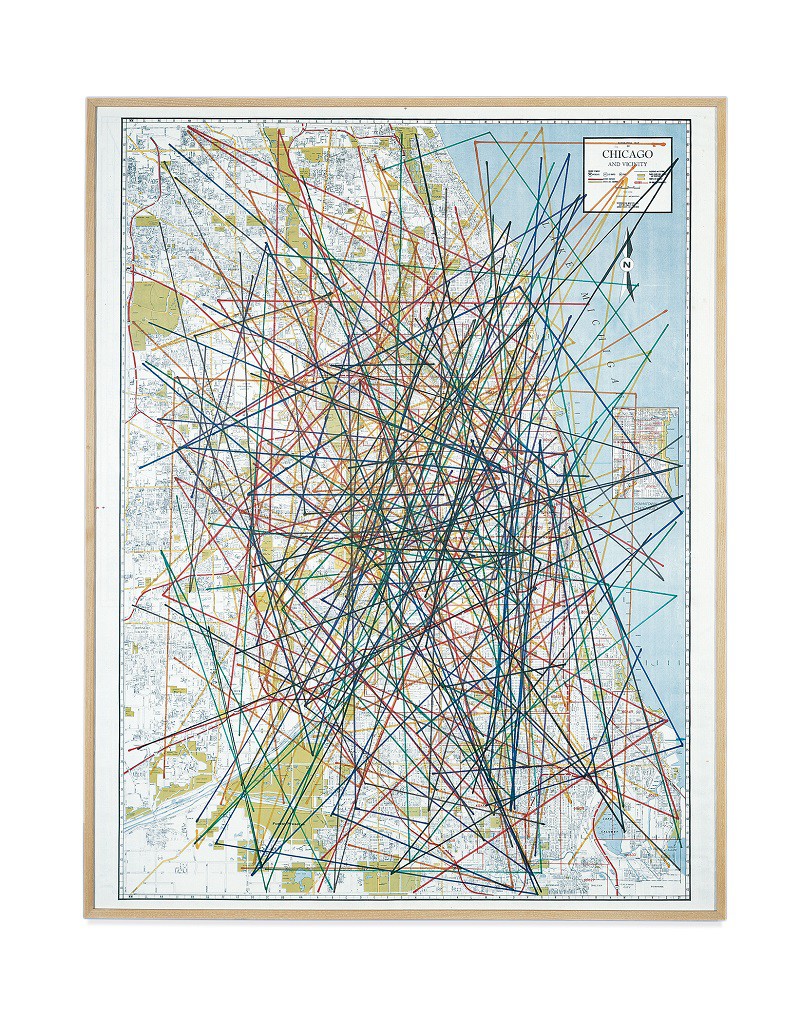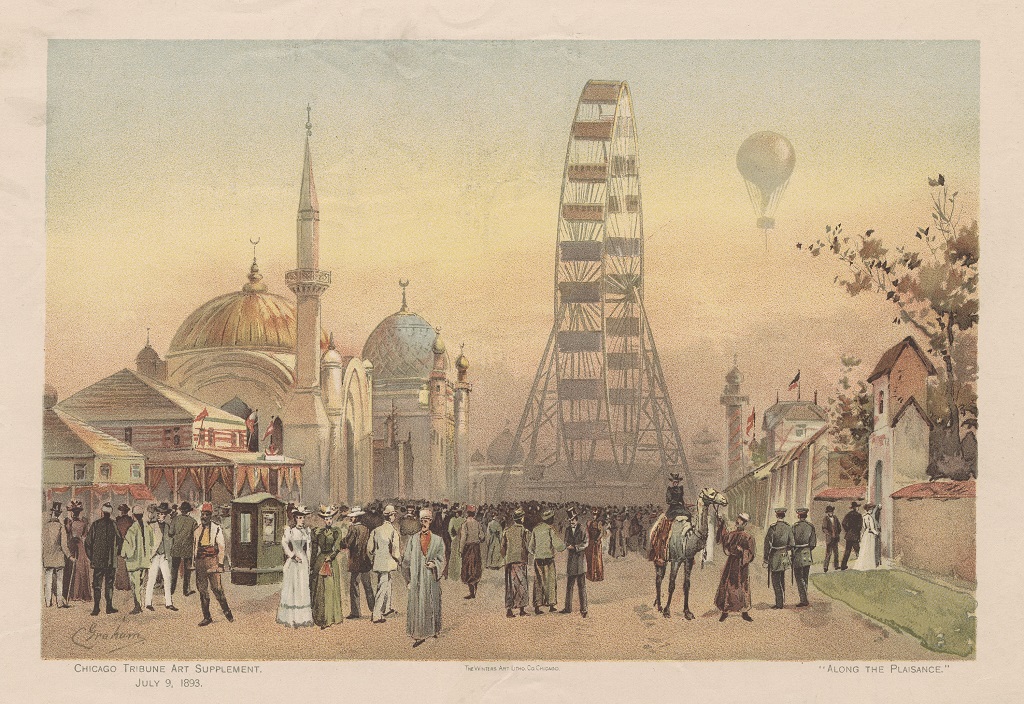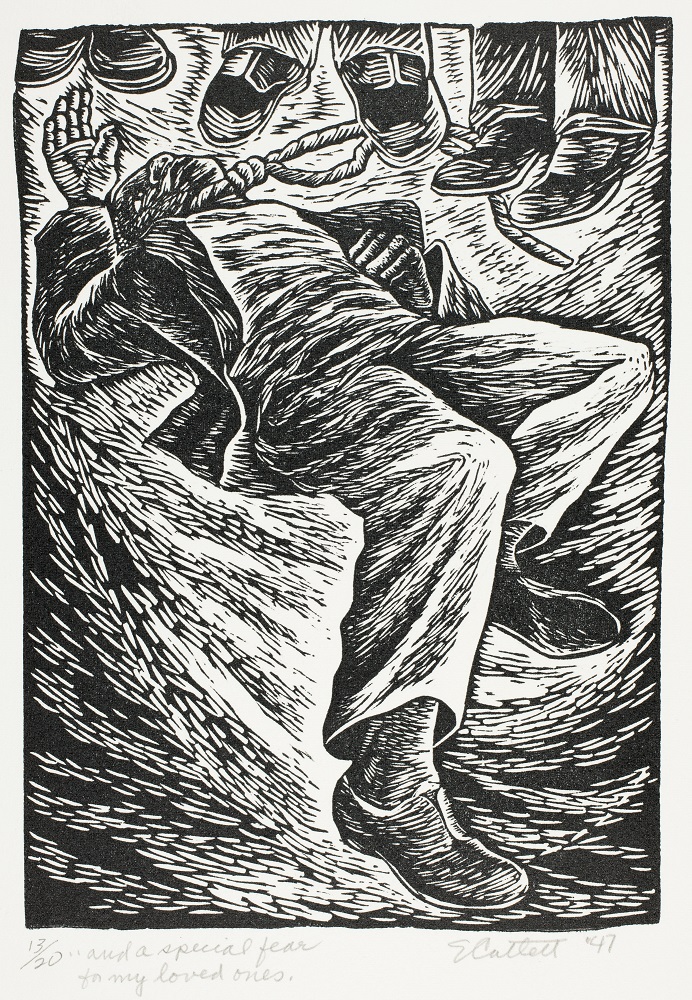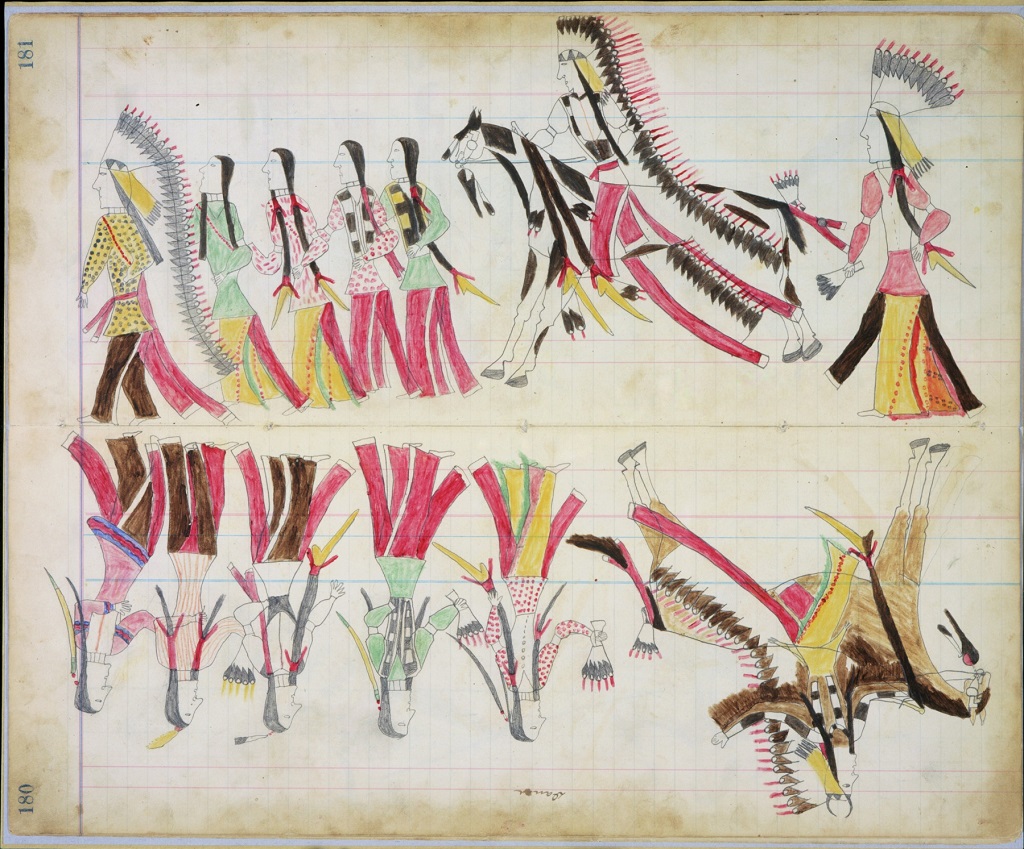Lesson Authors:
Megan Clark, Chicago History Museum
Demetra Disotaur, District 65
Shannon Greve, Frank Lloyd Wright Trust
Jan Kieckhefer, Frank Lloyd Wright Trust
Colleen McGinley, Dewey Academy of Fine Arts
Heidi Moisan, Chicago History Museum
Sue Stone, Chicago Academy
Summary
In this lesson students encounter the innovative designs of Frank Lloyd Wright, the famous architect who began his career in Chicago at a time when the city was recovering from the effects of the Great Chicago Fire. Students begin by examining photographs of a playroom that Wright designed for his children. They read an informational text about the playroom and about Wright’s innovative style of architecture. Students view drawings of two homes to compare and contrast Wright’s Prairie style with the more traditional Victorian style. Then they design their own “perfect playroom.” The lesson concludes with a discussion that focuses on how Frank Lloyd Wright’s innovations transformed the American home. Students also consider how future innovations may transform the ways that people live.
Lesson Overview
Grade Levels: 3–4
Time Needed: 3–5 class periods, 30–40 minutes each
Background Needed
Students should be familiar with the terms “transformation” and “innovation.” As you prepare to teach this lesson, you may find it useful to have more background on Frank Lloyd Wright and his approach to architecture and design. See the Frank Lloyd Wright Teacher Resource Packet for further information.
Essential Questions
- How can an architect transform people’s ideas of what their homes should look like?
- What innovations did Frank Lloyd Wright introduce in the American home?
Enduring Understandings
- Throughout our history, new inventions and innovations have brought about changes in the way we live.
- Frank Lloyd Wright understood how family life was changing in the early 1900s and the homes he designed helped influence those changes.
Objectives
- Students will read closely to determine what a text says explicitly and to make logical inferences from it.
- Students will cite specific textual evidence when speaking to support conclusions drawn from the text.
- Students will integrate and evaluate content presented in diverse media and formats including visually as well as in words.
- Students will prepare for and participate effectively in a range of conversations and collaborations with diverse partners, building on others’ ideas and expressing their own clearly and persuasively.
Key Vocabulary
- architect
- architecture
- innovation
- nature
- playroom
- Prairie style
- symmetry
- transformation
Standards Connections
Common Core State Standards
Anchor Standards in Reading: http://www.corestandards.org/ELA-Literacy/CCRA/R/
- CCSS-ELA Reading Anchor Standard 1: CCSS.ELA-LITERACY.CCRA.R.1
- CCSS-ELA Reading Anchor Standard 7: ELA-LITERACY.CCRA.R.7
Anchor Standards in Speaking and Listening: http://www.corestandards.org/ELA-Literacy/CCRA/SL/
- CCSS-ELA Speaking and Listening Anchor Standard 1: CCSS.ELA-LITERACY.CCRA.SL.1
Materials
In the Classroom
- drawing paper and color pencils or markers
- a computer with Internet access
- an interactive whiteboard or another classroom projector
- Optional for expanded playroom activity: empty boxes, such as shoeboxes, construction paper, modeling clay, and other art supplies
Works of Art
- Photographs of the Frank Lloyd Wright Home and Studio: Playroom, Oak Park, Illinois, 1889/1898
Other Resources
- Art Study: Frank Lloyd Wright Home and Studio: Playroom, Oak Park, Illinois, 1889/1898, Read to Build Knowledge
- Frank Lloyd Wright Trust, “A Contrast in Style: Prairie and Victorian Architecture”
- Frank Lloyd Wright Image Resource Packet, which includes photographs of:
- The Froebel Gifts
- Frank Lloyd Wright Home Exterior
- Frank Lloyd Wright Robie House Exterior
Lesson Steps
- Introduce Frank Lloyd Wright’s playroom: Display or pass around the images of the Frank Lloyd Wright Home and Studio: Playroom, Oak Park, Illinois, 1889/1898. Have students turn and talk with a partner to discuss the images. These discussion prompts can be displayed on the board:
- What do you notice about this room?
- What places would you like to explore in this room? Why?
- Guide students to look closely at the playroom: Explain that these are different views of the same room, which was the playroom architect Frank Lloyd Wright designed for his own house. Use questions such as the following to help students look closely at the images of Frank Lloyd Wright’s playroom:
- What different areas of the room do you notice?
- One end of the room has a balcony. How do you think the balcony was used?
- What brings light into the room? How would the light be different in the morning and at night?
- Do you think the ceiling is high or low? How big do you think this room is? What details give you a sense of its size?
- What are some activities you could do in this room? What features make those activities possible? (For example, you could sing and play music because there is a piano in the room.)
- There isn’t much furniture in the room now. What furniture do you see? How would it help you play? Do you see places where you could sit or lie down?
- Where could you put things away in this room? Where could you put things that you want people to see?
- What geometric shapes do you see in this room? What patterns do you notice?
- “Symmetry” is when things are balanced and even. Can you find examples of symmetry in this room?
- Frank Lloyd Wright liked to use contrasts, or opposites, in his designs. Can you find examples of contrasts between things that are high and low? Dark and light? Narrow and wide?
- If you could be in this room, which part would you go to first? Why? What would you do there?
- What feeling or mood do you get from this room? How do you think this room was used?
- Share an informational text: Pair students and distribute copies of the Art Study: Frank Lloyd Wright Home and Studio: Playroom, Oak Park, Illinois, 1889/1898, Read to Build Knowledge. Discuss the text with questions like the following:
- What have you learned about this room?
- What details in the text explain why this was a good room for children to play in?
- This is a playroom. How did Frank Lloyd Wright “play” with new ideas when he designed this room?
- This room was designed before people had televisions and electronics. What kinds of activities do you think Wright’s children used to do here? What clues in the room help you answer that question?
- What connections can you make between Frank Lloyd Wright’s work, the Great Chicago Fire, and the Chicago World’s Fair?
Show students the photograph of the Froebel blocks from the Frank Lloyd Wright Image Resource Packet. Have them discuss how Frank Lloyd Wright incorporated these shapes into the design of the playroom.
- Compare Victorian and Prairie Styles: Display the third page of “A Contrast in Style: Prairie and Victorian Architecture”, which has drawings of a Prairie-style home and a Victorian home. Explain that in the late 1800s many American homes were built in a Victorian style or other similar styles that came from Europe. Invite students to examine the two drawings and describe how Wright’s Prairie-style design differed from the more traditional Victorian style. In the discussion you can share information from the second page of the article, which summarizes these differences. You may also wish to show students photographs of the exteriors of the Frank Lloyd Wright House and the Robie House from the Frank Lloyd Wright Resource Packet.
- Have students design the perfect playroom: Remind students that one of Wright’s innovations was that this room wasn’t only for children—the adults also used it after the children went to bed. There was a piano, so the adults could dance. The playroom was isolated, down the hall from the rest of the house, so the adults’ dancing and conversation wouldn’t wake up the children.
Have students work alone or with partners to design a perfect playroom. First, students should make a list of everything that they want to do in the playroom: play games, read, take naps, paint pictures, etc. Then they should think about what they need in order to do each of those things: bright light? comfortable furniture? shelves for games and art supplies? Once they have considered these issues, students can create a design for their dream playroom and decide how to show it. They could draw pictures of the room from different angles and label the items in the room, or they could draw and label a floor plan for the room. For an extra challenge, students could make a diorama of their playroom using an empty box, construction paper, modeling clay, and other art supplies. Encourage them to include some innovations—new ideas that people haven’t seen before—as Frank Lloyd Wright did. As a final step, have students write a brief statement that explains the choices they made in designing their playroom.
- Lead a class discussion: In the discussion, reflect on the Essential Questions for this lesson:
- How can an architect transform people’s ideas of what their homes should look like?
- What innovations did Frank Lloyd Wright introduce in the American home?
Extend the conversation by asking students to share their playroom floor plans and identify their innovations. Point out that they have learned about the Victorian style and the Prairie style. Invite them to come up with a new name that describes the style of the playroom they designed. Help them make the connection between innovations that transformed people’s lives in the past, and current innovations that will transform how people live now and in the future.
Extension Activities
Complete a RAFT Assignment: Tell students that they will write about Frank Lloyd Wright and his innovations using the RAFT approach, which specifies a role, an audience, a format, and a topic for writing. Brainstorm possible roles students can assume in their writing by considering the different points of view of people and objects related to Frank Lloyd Wright and his designs. Then have them consider the possible audiences, formats, and topics as well:
- R – Role of the writer: Who are you as the writer? An architect? A home buyer? A child?
- A – Audience: To whom are you writing? Frank Lloyd Wright? A child? A construction company?
- F – Format: In what format are you writing? A diary entry? A letter? An editorial?
- T – Topic: What are you writing about? A problem? A new idea? An experience?
The chart below shows some possible options for students’ writing. After the brainstorming, have students work with partners to identify their role, audience, format, and topic. Once students have completed their assignments, display their writing or allow time for sharing.
| Role | Audience | Format | Topic |
| Frank Lloyd Wright | current 3rd– and 4th-graders | speech | how buildings can reflect nature |
| a child | his or her parents | letter | why we need a family room |
| Frank Lloyd Wright’s children | other children | advice column | why playrooms are great for children and adults |
| owners of a Victorian home | neighbors | complaint letter | why the Prairie style is bad |
| yourself | Frank Lloyd Wright | client letter | describing the features of a playroom you’d like him to design for you |
Additional Resources
Abernathy, Ann. The Oak Park Home and Studio of Frank Lloyd Wright. Oak Park, IL: Frank Lloyd Wright Home and Studio Foundation, 1988.
Architect Studio 3D. “About Frank Lloyd Wright. Life and Career.” Frank Lloyd Wright Preservation Trust. Accessed September 24, 2014. http://www.architectstudio3d.org/AS3d/about_lifecareer.html.
Balliett, Blue. The Wright 3. New York: Scholastic Press, 2006.
Boston Preservation Alliance. “Architectural Style Guide.” http://www.bostonpreservation.org/advocacy/architectural-style-guide.html. Accessed September 25, 2014. Images of architectural styles in Boston homes from the 1620s onward help show changing ideas about home design in the United States.
Fleming, Diane Bresnan. Simply Wright. Madison, WI: Castleconal Press, 2004.
Frank Lloyd Wright Preservation Trust. Building a Legacy: The Restoration of Frank Lloyd Wright’s Oak Park Home and Studio. Rohnert Park, CA: Pomegranate Communications, Inc., 2001.
Frank Lloyd Wright Trust. “Frank Lloyd Wright Home and Studio.” Accessed October 27, 2014. http://www.flwright.org/researchexplore/homeandstudio. Provides additional information about the Frank Lloyd Wright home in Oak Park.
Frank Lloyd Wright Trust. “Research and Explore.” Accessed September 24, 2014. http://flwright.org/researchexplore. Offers extensive resources for learning more about Frank Lloyd Wright’s life and work.
Thorne-Thomsen, Kathleen. Frank Lloyd Wright for Kids. Chicago: Chicago Review Press, 1994.

